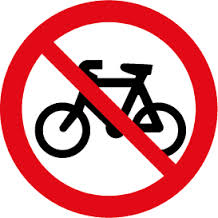
Two recent traffic accidents involving cyclists and cars – one a ‘dooring’ and one a that can only be described as a driver flat-out running over a man on a bike with their car – provide a rather sobering backdrop to the introduction of Queensland’s new 1m law next week.
The law is described on the Queensland government website as follows [1]:
From 7 April by law motorists must give:
– a minimum of 1 metre when passing cyclists in a 60km/h or less speed zone
– at least 1.5 metres where the speed limit is over 60km/h.
Motorists will be allowed to cross centre lines, including double unbroken centre lines, straddle lane-lines or drive on painted islands to pass cyclists provided the driver has a clear view of any approaching traffic and it is safe to do so.
There has been extensive media coverage of both the traffic accidents mentioned, and the implementation of this new law. As there should be.
But I simply cannot believe that the media coverage has been either honest or ethical. In fact, I would describe the media coverage as journalists promoting legal falsehoods and legitimising road-rage against cyclists.
In light of the media’s abysmal efforts to cover these stories I have been pondering the following questions: Is it ethical to misrepresent the new law, or even current laws related to cycling? Is it ethical to promote a war between motorists and cyclists on the road?
Let me show you why ask such questions.
A recent editorial in The Australian following the ‘oozing’ incident seemed to serve the sole purpose of misleading and deceiving the public. It needs to be quoted here in full to be believed – I don’t want to be accused of a lack of context
THE arrogant sense of entitlement in our inner cities is also evident in the ever-growing number of cyclists snaking their way through pedestrians on overcrowded pathways, darting between cars and clogging-up lanes on our congested roadways.
The problem of city cyclists reached their apogee in Melbourne this week when a cyclist was “doored” on busy Collins Street, after a passenger opened a taxi door and a rider crashed into it. Neither the taxi nor its passenger could be deemed at fault because a narrow “bike lane” inhibited the taxi from stopping next to the kerb. The passenger was lucky to avoid serious injury.
What makes this incident even more absurd is that, although the lane was marked by a bicycle symbol, it was not actually a dedicated bicycle lane. Melbourne bike lanes must have signage, fixed to a pole, that shows the start and finish of a lane, as well as clear markings on the road itself. The state’s bicycle operations officer — yes, there is such a position — admits there is confusion for cyclists, pedestrians and motorists. Cyclists, including the one “doored” this week, are using cameras to film such incidents so they can make insurance claims. The Victorian government imposed even tougher on-the-spot fines in 2012 for people who opened car doors in the direct path of cyclists.
For too long, authorities have bowed to the demands of selfish cyclists and their lobby groups. Truth is, our cities are dominated by cars because they are sprawling. We have no equivalent of Amsterdam and should stop pretending we do.
In this article the law, in my view, is clearly misrepresented. The lane used by the cyclist in this incident was marked in a particular way with bike stencils (what are typically known as Bicycle Awareness Zones) indicating that drivers should be alert for cyclists and normal road rules apply. These normal road rules allow bicycles to pass vehicles on the left side.
The Australian’s editorial implies that a) it was inappropriate, if not illegal, to cycle in that road space because it was not a bike lane, and b) the taxi driver and passenger could not be at fault. Both these claims are false.
Such poor journalism probably goes some way to explaining why in a later article at The Age, their readers blamed the cyclist for the collision.
Yesterday in Brisbane we had some coverage of the new 1m passing law. Madonna King calls it “a hostile and unworkable law”
That’s why there are so many spats even before the laws commence; sharing the road already requires motorists to cross the middle lane, to safely pass a cyclist.
But despite the law being introduced to try and diffuse arguments, it’s only going to escalate tensions.
In this article it is implied that it is difficult to drive with cyclists on the road and that the rights of motorists are superior. Similarly, The Australian’s Michael Saunders and Robyn Wuth covered the law with an article about how the new 1m law will be unworkable, with a helpful link embedded to a Courier Mail article by Chris Bartlett entitled 14 reasons we hate cyclists, which is so bad I just can’t tell whether it is satire (though the reader comments suggest not).
Returning to the question of ethics in journalism. How would these journalists feel if a driver who had killed a cyclist came forward and said
“It’s been in the newspapers everywhere. Cyclists bring it on themselves. The new law is unworkable. It wasn’t a real bike lane so I didn’t give them any room. Maddona King told me it is a war out there!”
I hope they would think twice about publishing fact-free misleading articles primarily aimed at provoking outrage and conflict. It is simply not that difficult to drive with other vehicles on the road – trucks, cars, buses AND bicycles – if we al just have a little courtesy.
Tips, suggestions, comments and requests to [email protected] + follow me on Twitter @rumplestatskin
fn.[1] For future reference, here are the links to summaries of relevant traffic laws in relation to cycling on public roads- Queensland,New South Wales,Victoria,South Australia,Western Australia,ACT, NT.